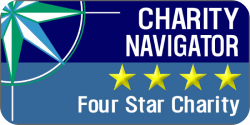The spread of COVID-19 around the globe has grown to become an undeniable and uncompromising part of our lives. Although our personal experiences with the virus may differ in severity and anxiety, we are all linked together by a common goal to respond as effectively as is possible to this outbreak.
This outbreak has primarily localized to the big cities, which host the exchanges of people, money, and information that powers the global economy. But there is no reason to believe that this containment will hold. Sooner, rather than later, the virus will shift away from the urban and peri-urban centers, and into the rural communities of the hinterland. This situation could spell disaster for the vulnerable indigenous populations, which have, for thousands of years, made their homes in these regions around the world.
The reasons for their vulnerability are reflective of the circumstances of many marginalized rural communities in the developing world: A lack of access to clean water, sanitary products, and medical centers. Those medical centers that are not too distant as to be deemed impractical are generally underfunded and understaffed, to say nothing of their lack of more specialized equipment such as ventilators and facemasks. Many indigenous communities, finding themselves unintegrated into traditional global or national economies, face both economic and political marginalization. The consequences of this marginalization can be expressed empirically; one study from the French Institute for Public Health Surveillance found that indigenous Brazilian communities suffered an incidence rate of H1N1 influenza 4.5 times higher than the Brazilian average. We should bear this number in mind when discussing our response to COVID-19, a disease that is near twice as contagious. NGO and Development Organizations will be crucial to supporting these communities, as some Governments have unfortunately neglected to uphold national and international laws that guarantee the rights of indigenous peoples. An effective and equitable response to the needs of these communities will ultimately revolve around two axes:
Firstly, efforts to inform and educate vulnerable populations on the dangers of COVID-19 and the means through which spread can be contained. Indigenous populations vary in the degree of isolation they maintain. Still, in many cases, members of the community do not speak the official or majority language of government or health officials. A serious effort, therefore, must be undertaken to translate health information and guidelines into the myriad indigenous languages that might be spoken in a country, and translators must be able to relay information to illiterate members of the community if possible and safe.
Secondly, respecting the interests and requests of indigenous leaders as they search for the best ways to protect their communities. For the most isolated of villages, this might even mean eschewing contact with the outside world, as increased contact could unwittingly accelerate the arrival of the disease into the community. For those communities which decide to maintain external contact, containment measures can limit the spread. Individuals should be screened prior to entry into indigenous communities, or at the very least quarantine themselves on entry. We should neither underestimate the contagiousness of the virus, nor the ability for local leaders to understand the unique challenges faced by their communities.
These are some measures that can be implemented now, but they do not address the fundamental challenges which occur independently of COVID-19. What will we do when this pandemic inevitably recedes? When our living experiences of the epidemic have slowly calcified into a listless memory, will the lessons we are currently learning be similarly forgotten? The current outbreak is revealing many of the shortcomings in our coverage of vulnerable populations. Weaknesses that have been highlighted by, but are not necessarily a consequence of, this pandemic. Part of our common goal should include a recognition of the political and economic forces which have made certain communities more conducive to the spread of the disease, as well as responding to the new societal forces that will, directly and indirectly, emerge in the wake of COVID-19.
This article is written by Martin Pardo. He is a Development Officer at the International Institute of Rural Reconstruction. The image used on this articles is owned by David Osorio for ACDI/VOCA through the USAID.



